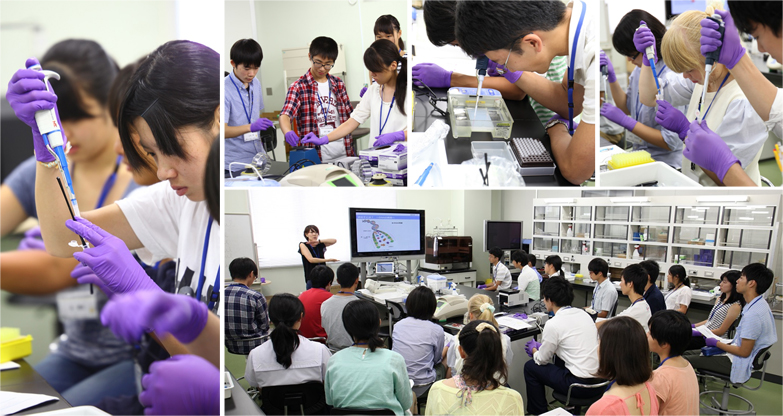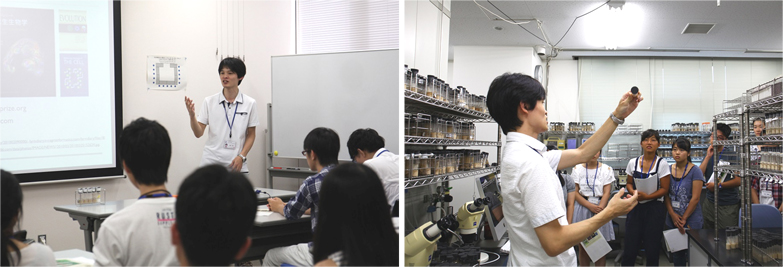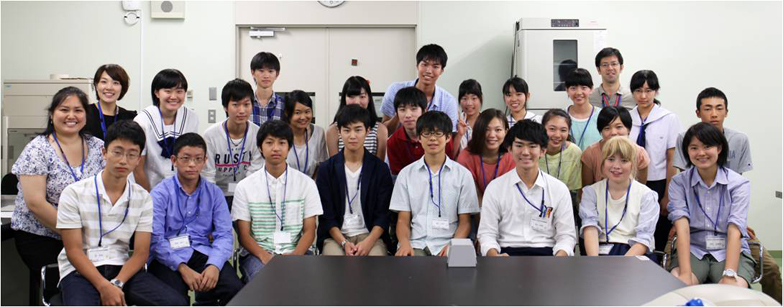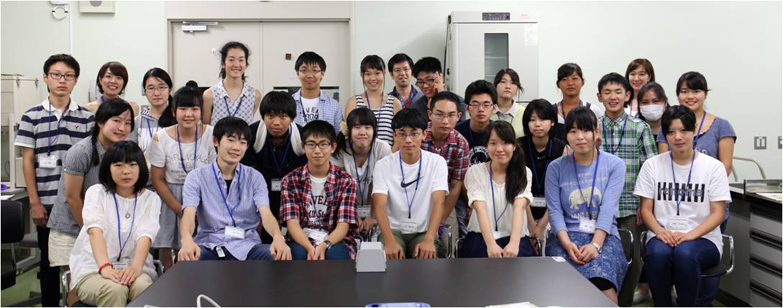
News and Announcements from the CDB
The annual one-day summer school program for high school students was held at the RIKEN Center for Developmental Biology on August 4 and 6. This is the ninth year the event was organized, which includes a talk by a CDB researcher, a laboratory visit, and scientific experiments. A total of 47 students, primarily from the Kansai region, participated over the two days.

Students carrying out laboratory experiments

Toshiya Ando giving a talk to the students (left), and then showing them around the laboratory (right)
This year’s program was organized around the topic of ‘genes’. Through lectures and laboratory experiments, the participants learned about how genes—the blueprint of our bodies—generate and shape our bodies, and how individual differences arise from even small changes to a gene. The laboratory experiments were designed to allow the students to predict their tolerance levels to alcohol by analyzing their own DNA. Specifically, they looked for single nucleotide polymorphisms (SNP) in the gene encoding aldehyde dehydrogenase II (ALDH2), an enzyme that helps to metabolize alcohol in the body. They extracted DNA from cells collected from their mouths, amplified the DNA using polymerase chain reaction (PCR) method, treated the amplified DNA with a restriction enzyme, and ran their samples in an agarose gel electrophoresis to determine whether they had an active or non-active form of ALDH2. They also compared these results with those obtained performing a simple alcohol patch test on their arm. The students worked diligently at the task at hand, despite some struggles getting the hang of using unfamiliar equipment.
During the afternoon session, students had the opportunity to listen to a talk by research scientist Toshiya Ando from the Laboratory for Morphogenetic Signaling (Shigeo Hayashi, Team Leader) and take a peek inside a laboratory. In his talk, Ando explained the history of using Drosophila mutants in biological research and also introduced his own research looking at the evolution of antennae morphogenesis in moths. Afterward, he led the students on a short tour of the laboratory, giving them a chance to see firsthand the environment in which researchers carry out their work. The tour included a stop in the fly experiment room in the laboratory where different fly mutant strains are stored and bred for experiments.
The day wrapped up with a short discussion on the issues surrounding the handling and accessing of genetic information, the ultimate form of personal information.

Participants from day 1

Participants from day 2
| Related link | Summer program for high school students |
|---|